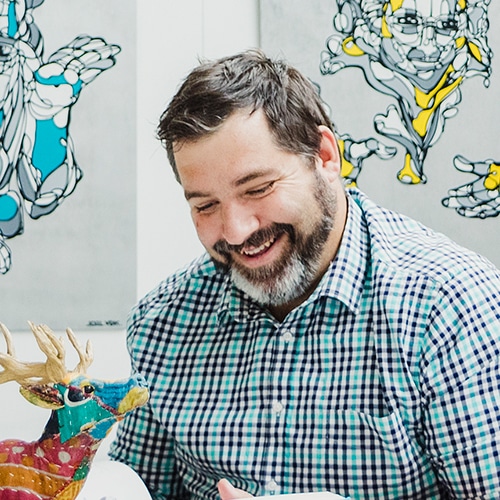The struggle is real
I've been thinking about this recently, how hard it can be to create our own work. Have you ever noticed this yourself?
When you've been super excited about a personal project, but then almost paralysed when it comes to creating that vision?
Well, I know I have.
Let's be honest, designing for yourself can become a drag. Many designers, including myself, have struggled with knowing how and where to start when creating work for themselves.
I recently created my own personal brand and a website to go along with it as part of a course and content I have been creating, but I didn't struggle at all with this personal project. Recently while speaking to Nicole Osborne the personal brand expert from Wunderstars, we talked about how I approached this and the answer was pretty simple.
I treated this like a client project.
Behave like your ideal client
One of the main reasons that people often struggle to create things for themselves (logos, websites etc) vs doing it for clients is that they don't follow their normal process. It’s easy to believe because we know ourselves and by being both the client and the creator we already have all the answers, but in reality, we don't.
Not only that but skipping steps in our own process is where we are most likely either get stuck, or produce something that won’t benefit us in the long run.If you trust how you work with clients, trust that this process is right for you also.When I came to create me website, I followed my process which looked like this:
1 - Creating a time frame and deadline (roughly) if you don't have an idea of a deadline or how much time and energy you are going to spend the project will take longer.
2 - Running a discovery and creating a brief (goals, current state vs ideal future state, defining audience etc)
3 - Research (competitors, suitable sites) - do this to find and set the general direction for the site and relate that back to the audience not your (the clients) personal taste.
4 - Outlining what new content was needed for the website (content map) work out what content can be kept or tweaked that I already have.
5 - Start creating the content (not all of it but seriously we all know how had content is to get from clients so don't be your own worst client)
6 - Create a basic wireframe (at least a pencil sketch or 2)
7 - Design mockups (so I know exactly what is being built and no decisions are being made on the fly)
8 - Build a prototype (working version of the site, not final content) test templates and functionality across browsers and devices
9 - Add content, review, launch.
Whats your process?
Now of course I'm not saying you have to follow my process, but when designing for ourselves it’s tempting to skip stages in our process.
The reality is that it would have been “easier” initially to forget all of this, but for each step, I skipped the more risk I would be taking. By not following my own steps not only would I struggle with creating the work, but the likely hood of it being the best and most effective solution would be reduced to the point of total guesswork.
So remember, if you have a process, you have it because you believe it in and it gets results.
If you want your own personal projects to be the best they can, give it the royal treatment.
Follow your process.

